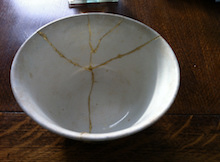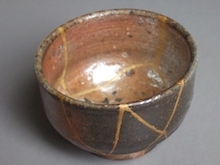Published on

Ever heard of kintsugi?
It’s the Japanese art of repairing broken china or ceramics using a gold-based glue, which makes them more attractive and extends their life. What’s more, the Japanese value the restored objects more highly than the original ones. An interesting philosophy when you think that today, various marketing tactics are used to make us think products are obsolete as soon as an updated version is released—even if they’re still in good working order.



Ads that mean well...
Have you ever counted the number of ads you see on the way to work—including the ones on your phone?
Every day, we’re bombarded with dozens, even hundreds of ads. That’s nothing new. But you have to agree, unless you have the Force within you, like Yoda, it’s hard not to be influenced by them. Is it just as hard to resist the temptation to replace something that still works? It doesn’t seem to make sense. So what makes us act the way we do?
- First, there’s the financial side: when something breaks but could be repaired, it often costs less to buy a new one. Yep, that’s right.
- Your old phone’s less-advanced technology could also tip the balance in favour of a more recent model. Or perhaps you’d just prefer something new?
- Presents or promotional offers may prompt you to stop using something that’s still in good working order.
- Maybe it’s just lost its appeal. Remember the toy cowboy abandoned by a kid when he grew up in Toy Story?
Just becoming aware of all this is a big step!
Ways to stop impulse buying
- Change your consumer habits and reduce at source! Why not consume less? As my partner said this morning, “Happiness is being content with what you have.” So here’s a challenge for you: The next time you feel the urge to buy something new, ask yourself if you really need it.
- Instead of automatically putting things in the trash or in the green bin for recycling—an energy-intensive process—try to reuse or recover them. Take a moment to ask yourself what’s motivating your actions. Every time you think about getting rid of something that still works, ask yourself why.
- As a last resort, try to give replaced objects a second life by passing them on to someone who will make good use of them. The only thing that should be left in the closet is the broom!
So, why do you throw objects away before their end of life?
Next time, we’ll be talking about something concrete everyone can do: repairs. We’ll give you a wealth of good ideas, which you can try out to see what works for you, in an effort to keep moving towards more responsible and sustainable consumption! Stay tuned: equiterre.org/en




